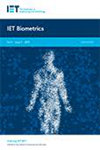The field of biometric recognition - automated recognition of individuals based on their behavioural and biological characteristics - has now reached a level of maturity where viable practical applications are both possible and increasingly available. The biometrics field is characterised especially by its interdisciplinarity since, while focused primarily around a strong technological base, effective system design and implementation often requires a broad range of skills encompassing, for example, human factors, data security and database technologies, psychological and physiological awareness, and so on. Also, the technology focus itself embraces diversity, since the engineering of effective biometric systems requires integration of image analysis, pattern recognition, sensor technology, database engineering, security design and many other strands of understanding.
The scope of the journal is intentionally relatively wide. While focusing on core technological issues, it is recognised that these may be inherently diverse and in many cases may cross traditional disciplinary boundaries. The scope of the journal will therefore include any topics where it can be shown that a paper can increase our understanding of biometric systems, signal future developments and applications for biometrics, or promote greater practical uptake for relevant technologies:
Development and enhancement of individual biometric modalities including the established and traditional modalities (e.g. face, fingerprint, iris, signature and handwriting recognition) and also newer or emerging modalities (gait, ear-shape, neurological patterns, etc.)
Multibiometrics, theoretical and practical issues, implementation of practical systems, multiclassifier and multimodal approaches
Soft biometrics and information fusion for identification, verification and trait prediction
Human factors and the human-computer interface issues for biometric systems, exception handling strategies
Template construction and template management, ageing factors and their impact on biometric systems
Usability and user-oriented design, psychological and physiological principles and system integration
Sensors and sensor technologies for biometric processing
Database technologies to support biometric systems
Implementation of biometric systems, security engineering implications, smartcard and associated technologies in implementation, implementation platforms, system design and performance evaluation
Trust and privacy issues, security of biometric systems and supporting technological solutions, biometric template protection
Biometric cryptosystems, security and biometrics-linked encryption
Links with forensic processing and cross-disciplinary commonalities
Core underpinning technologies (e.g. image analysis, pattern recognition, computer vision, signal processing, etc.), where the specific relevance to biometric processing can be demonstrated
Applications and application-led considerations
Position papers on technology or on the industrial context of biometric system development
Adoption and promotion of standards in biometrics, improving technology acceptance, deployment and interoperability, avoiding cross-cultural and cross-sector restrictions
Relevant ethical and social issues
《IET Biometrics》期刊已被查看: 次
此期刊被最新的JCR期刊SCIE收录








